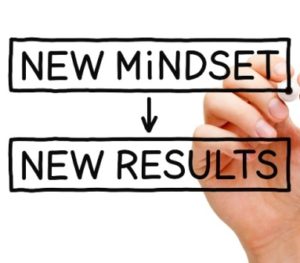
Having right mindset is ket to get results from Lean Kaizen Implementation. Leaders need to have right mindset to have maximum benefits from Kaizen / Lean Implementation program.
Lean thinking starts with the customer and works back from there, defining any activity that doesn’t add value for the customer as waste. The goal of the lean organisation is to strive constantly to deliver value to the customer in the shortest possible time through the relentless elimination of waste, variability and inflexibility. Certain ideas are common to all lean companies, and contribute to what we might call the lean mindset.
- DON’T THINK BIG; THINK SMALL AND FLEXIBLE: One of the goals of a lean transformation is to drive down lead times to allow a company to respond quickly to its customers’ changing demands. This involves designing both core processes and the organisational structure to create flow. For executives schooled in the guiding principle of scale economies – namely, using expensive equipment to process large batches in order to drive down unit cost – such an approach may seem perverse. A lean mindset views common problems in a very different light. Think about boarding a flight. Where there is no direct gangway access, big buses are used to transport passengers in batches from the terminal building to the plane. You have to wait in the lounge for the bus to arrive, wait on the bus for the last passenger to get on and then queue on the tarmac to board the plane. The operating system is characterised by stagnation rather than flow. Now let’s consider how we might apply a lean mindset to tackle passengers’ frustration. If more journeys were made with smaller buses, waiting time would be reduced. This would incur higher capital investment and a heavier salary burden, but substantially increase value to passengers through better service.
-
THE FRONT LINE IS WHERE THE VALUE GETS ADDED: When you go to a supermarket, you want to find good products quickly and pay for them without queuing for too long. If you can’t find something, you need a friendly member of staff to show you where it is. As a customer, you don’t care how many deliveries were made last night, or what training schemes the till operators have been on, or what key performance indicators the retailer tracks. For sure, the supermarket may need all these things to deliver value to you, but they don’t form part of your shopping experience, or your perception of value. Obvious, perhaps – but managers often have difficulty accepting the implications. They may have to adjust their own roles and the way they allocate their time between different tasks in order to ensure that front-line operations run smoothly and value is added at the customer interface.
-
EVERYONE IN THE ORGANISATION NEEDS TO UNDERSTAND HOW HIS OR HER ACTIONS CONTRIBUTE TO BUSINESS GOALS: Consider a company that has always operated with a high level of overtime. Because of falling demand, the business no longer needs this expensive additional capacity. Employees who have become used to the extra income will need to understand the business reasons for withdrawing it before they can accept the change. The withdrawal of overtime will need to be offset by some other perceived benefit such as job security. Managers must be transparent, not only to demonstrate the need for change but also to earn trust and help align the interests of individual employees with those of the company. Such alignment forms the necessary basis for employees to develop a lean mindset and take on the extra responsibilities that a lean system demands.
-
THE ROOT CAUSES OF PROBLEMS NEED TO BE ADDRESSED, NOT JUST THE SYMPTOMS: In unstable operating systems, as we have seen, people spend most of their time reacting to problems. Over time, they become adept firefighters, their behaviour is rewarded, and firefighting becomes part of the culture. In a lean environment, by contrast, problems are not tolerated. Instability is anathema to a lean mindset. Any source of loss is pursued back to its root causes and designed out to prevent recurrence. At Toyota, any problem is brought to light as quickly as possible so that it can be resolved there and then. Employees are obliged to stop an entire car production line if they detect a fault. The root causes must be resolved before production resumes.
-
A PROBLEM IS AN OPPORTUNITY TO IMPROVE, NOT TO BLAME: A regime based on punishment quickly becomes oppressive and invites rebellion and subversion. Children who are humiliated if they admit to mistakes soon learn it’s safer to keep quiet and pretend nothing has happened. It’s much the same in the workplace. Making an example of people who do the wrong thing doesn’t work for long; employees will simply decide to keep their heads down and avoid being exposed. Worse, they are likely to hide problems and present everything in a positive light. This makes it impossible to recognise and resolve problems as they arise. The consequence will be a culture of denial in which employees are only partly engaged in what they do and hold back from contributing to improvements. As they relentlessly reduce the levels of waste in an organisation, lean improvement efforts invariably unearth problems. The challenge is to welcome these problems as they emerge, and then find ways to resolve them.
New mindsets drive new behaviours thus new actions. So having Right Lean Mindset is the Key to start Kaizen journey!


